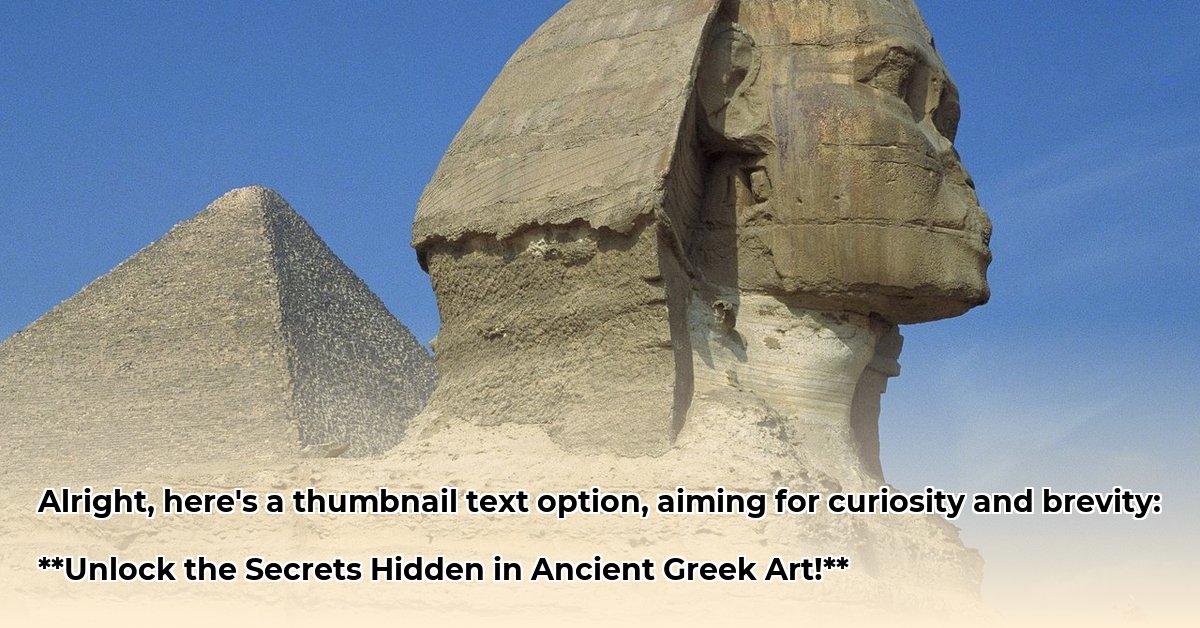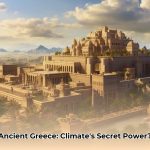Explore Ancient Greece Drawings: Styles, Periods and Enduring Examples
Ever wondered about the intricate art of ancient Greece? Beyond mere sketches on parchment, the artistic legacy of this civilization unfolds across a spectrum of forms, from the meticulously drawn patterns on ancient pottery to the monumental sculptures rooted in foundational linear designs. This comprehensive guide embarks on a journey through how Greek art evolved, from its initial geometric expressions to intensely realistic and emotionally charged figures. We will delve into its enduring relevance, provide insights on how to genuinely appreciate its nuances through the lens of fundamental design, and identify key locations to witness its magnificence firsthand. Prepare to explore the beautiful and fascinating world of ancient Greek art, encompassing painted vases, impressive sculptures, and the underlying spirit of drawing, outline, and composition that permeated all forms of expression. Learn more about ancient Greece art here.
Unveiling Ancient Greek Art: A Comprehensive Guide Rooted in Linear Design
Let’s begin a captivating journey to explore the profound realm of ancient Greece, with a dedicated focus on the visual expressions that offer a unique window into this profoundly influential civilization. While the term “drawings” might initially evoke images of simple sketches, our exploration extends broadly across the ancient Greek artistic landscape. This is because drawing, as a foundational artistic act and the precursor to all visual forms, was intricately intertwined with other mediums such as pottery decoration, sculptural design, and architectural planning. We will uncover how the core spirit of artistic delineation, linear storytelling, and geometric composition manifested across diverse forms throughout various historical periods.
The Dawn of Decorative Art: The Geometric Period (900–700 BCE)
Imagine Greece emerging from a period often referred to as the Dark Ages, around 900 BCE. A distinct artistic spirit began to flourish, predominantly expressed through ceramic art. During this Geometric period, artists meticulously adorned vases and other vessels with precisely arranged geometric patterns. The use of a fast wheel allowed for larger and higher quality ceramics, providing an expansive canvas for these drawn decorations. The Dipylon Krater, a monumental vase serving as a grave marker, stands as a prime illustration. It features extensive bands of intricate geometric shapes and stylized, almost blueprint-like, depictions of funerary rituals. Observe the dense application of patterns, characteristic of the horror vacui style, where every available space is richly drawn upon.
Were these early decorative elements considered “drawings” in the contemporary sense? Perhaps not precisely. However, they represent a formative stage of visual communication, employing linear forms and abstract shapes to tell stories. The remarkable precision and thoughtful composition invested in these designs demonstrate a nascent artistic sensibility that laid the groundwork for sophisticated future innovations. This period marks a crucial step in the development of Western art, showcasing how early cultures used drawn art to define identity and ritual, meticulously outlining their world through geometric precision.
Narrative Silhouettes: The Archaic Period (c. 650–480 BCE)
As Greece transitioned into the Archaic period, around 650 BCE, it experienced significant exposure to Near Eastern artistic influences. This influx of new ideas enriched Greek art, making it considerably more elaborate. Alongside continuing geometric motifs, intricate mythical creatures like sphinxes and griffins began to populate artistic compositions, their forms drawn with new fluidity. This era also witnessed the emergence of the iconic kouros and kore sculptures—free-standing figures of young men and women. These statues exhibit a unique blend of nascent realism and idealized forms, suggesting artists were navigating the balance between observation and imagined perfection, often starting with a precise outline to define the human anatomy. The characteristic Archaic smile, seen on many of these figures, is widely interpreted by experts as a symbol of serene perfection, a subtly drawn expression.
A significant artistic advancement of this period was the black-figure technique applied to pottery. First appearing in Corinth and later spreading to Athens, artists would meticulously paint figures in a dark, lustrous clay slurry directly onto the reddish-brown clay. This process, essentially a form of linear drawing, utilized stark silhouettes to vividly depict stories of gods, heroes, and daily life. Consider the artisan’s hand, steady and precise, carefully outlining each figure, then filling it with black and incising fine details with a sharp tool to reveal the red clay beneath—a true form of subtractive drawing. The Siren Vase, a stamnos from around 480 BCE, exemplifies the evolution towards red-figure pottery near the end of this era, where figures were left in the natural clay color and the background was painted black, allowing for even finer brush-drawn details. These narrative scenes offer invaluable insights into Greek religious beliefs, societal customs, and fundamental values, all conveyed through the compelling power of line and form.
The Pursuit of Perfection: The Classical Period (c. 480–323 BCE)
The Classical period, beginning around 480 BCE, is frequently hailed as the “Golden Age” of Greece. It was a time of unparalleled intellectual, artistic, and cultural flourishing. Artists in this era strived for an unprecedented degree of naturalism, aiming to capture the human form with remarkable accuracy. The renowned sculptor Polykleitos notably formulated a system of ideal proportions, known as the “Canon of Proportions,” which outlined the perfect mathematical ratios for the human body. These proportional guidelines were, in essence, a framework for drawing the ideal human figure. His masterpiece, Doryphoros (meaning “Spear-Bearer”), perfectly embodies these principles, showcasing athletic grace and idealized masculinity through a carefully posed and linearly defined contrapposto stance. The Kritios Boy, dating from about 480 BCE, is one of the earliest known examples of this relaxed, natural pose.
Architectural achievements also reached their zenith during this time. The Parthenon in Athens, dedicated to the goddess Athena, stands as a quintessential example. Its elegant Doric columns and intricately sculpted friezes have served as an architectural benchmark for centuries, all constructed from meticulously drawn and engineered plans. The introduction of the ornate Corinthian order further expanded the vocabulary of architectural design.
So, how do “drawings” integrate into this period of sculptural and architectural prowess? Interestingly, a novel technique known as white-ground pottery gained prominence during this era, particularly for lekythoi (oil vessels used for funerary rites). Instead of the black-figure approach, artists would coat the vase with a white clay slip (a thin, watery clay mixture). This provided a luminous, blank canvas that allowed for much more detailed and colorful paintings, often resembling true drawings with fine lines, washes of color, and even elements of perspective. These white-ground vases were frequently used for ceremonial purposes or as grave offerings. This technique enabled artists to employ a broader chromatic range and create more nuanced, illusionistic compositions, underscoring the increasing importance of linear artistry in conveying complex visual narratives, as seen in scenes of solemn visits to tombs.
Emotional Depths and Drama: The Hellenistic Period (c. 323–27 BCE)
Following the death of Alexander the Great in 323 BCE, Greek culture expanded dramatically across the Mediterranean world, ushering in the Hellenistic period. Art from this era became notably more diverse, emotionally charged, and dramatic, mirroring the dynamic socio-political changes of the time. Sculptures began to display a wider spectrum of human emotions, capturing the full complexity of the human experience. The graceful Venus de Milo (Aphrodite), with her serene yet powerful presence, and the intensely suffering Laocoön and His Sons, showcasing extreme torment, are iconic examples of this expressive shift, their dramatic forms conveyed through masterful linear composition and anatomical definition. The Winged Victory of Samothrace also exemplifies the period’s dramatic flair and sense of movement.
Architecture also evolved, becoming increasingly ornate. The Corinthian order, with its elaborate capitals intricately decorated with acanthus leaves, grew significantly in popularity, its complexity born from sophisticated architectural drawings. Did drawings from this period also reflect this trend towards heightened emotion and detailed complexity? While fewer original drawings have survived compared to the abundance of pottery and sculpture, existing fragments and literary accounts suggest a definite move towards more expressive and intricate linear depictions, aligning with the broader artistic currents of the age. Hellenistic painters, for instance, increasingly included detailed landscapes and employed trompe-l’œil realism, techniques that rely heavily on precise linear perspective and the drawing of light and shadow to create illusionistic effects. Mosaics, too, reached new levels of detail and realism, meticulously composed through precise arrangement of tesserae, akin to drawing with tiny colored stones. Scholars continue ongoing research to uncover more direct evidence of drawing practices from this period, but the spirit of detailed, expressive linear design is undeniable.
A Lasting Cultural Impact: The Enduring Blueprint
The artistic achievements of ancient Greece, fundamentally rooted in their mastery of line and form, have exerted a profound and enduring impact on Western culture. Roman artists extensively emulated and adapted Greek styles, often directly copying their sculptures and incorporating Greek architectural drawings into their own monumental constructions like aqueducts and domed buildings. Renaissance masters found boundless inspiration in classical forms and intellectual ideals, meticulously studying and drawing from surviving Greek and Roman works to revive principles of humanism, balance, and visual realism.
Even in contemporary times, Greek art continues to be admired, studied, and revered, reminding us of the timeless power of human creativity and the perpetual pursuit of beauty. Indeed, ancient Greek culture is widely considered one of the most foundational and influential civilizations in human history, its artistic blueprints continually informing new creations.
Appreciating Greek Art: An Actionable Guide to Visual Design
To truly engage with and appreciate the depth of Greek art, especially through the lens of its underlying design and linear elements, consider these actionable insights:
| Aspect | Description |
|---|---|
| Composition | Observe how the artist arranged the various components of the artwork. Does the placement of figures and objects, and the lines that define them, create balance, tension, or narrative flow? |
| Materials | Reflect on the artist’s choice of materials, such as marble, bronze, or clay. How did these choices influence the ability to “draw” detail or create specific textures and contours? |
| Historical Context | Investigate the historical and cultural circumstances surrounding the artwork’s creation. Understanding its era can profoundly alter your perception of its design choices. |
| Symbolism | Identify recurring motifs, gestures, or objects within the artwork. These often carry deeper meanings or narratives, frequently conveyed through stylized or precisely drawn forms. |
| Technical Skill | Ponder the specific techniques and mastery the artist required to produce the artwork. Its execution, from the initial outline to the final detail, might genuinely amaze you. |
How Greek Art Shaped the Roman World: A Legacy of Adaptation in Design
Key Takeaways:
- Greco-Roman art represents a fascinating blend of shared aesthetic values and distinct cultural expressions, with Romans heavily adapting Greek designs and artistic principles.
- Both civilizations highly valued beauty, symmetry, and proportion, frequently drawing inspiration from rich mythological narratives that provided compelling subjects for their visual art.
- Greek art characteristically emphasized idealized forms and philosophical perfection, often achieved through precise anatomical drawing, while Roman art prioritized stark realism and the glorification of imperial authority and individual portraiture.
- The Roman adaptation of Greek architectural orders—like the Doric, Ionic, and Corinthian—demonstrates a unique fusion of established styles and blueprints with practical innovation.
- This profound artistic synthesis left an indelible mark on Western art, influencing movements from the Renaissance to modern design principles, serving as a continuous source of visual vocabulary.
The intertwining legacies of ancient Greece and Rome have, without question, forever shaped the trajectory of Western art and culture. Their classical art, spanning from the 8th century BC to approximately 400 AD, offers a revealing glimpse into their core values and societal beliefs. While Greek and Roman art certainly shared common foundations, each developed distinctive characteristics. But how did Greek art influence Rome? Let’s explore this intricate relationship through the lens of shared and adapted designs.
Shared Foundations: Aesthetic Principles and Design Inspiration
Both ancient cultures profoundly revered principles of beauty, harmony, and proportion. Artists from both traditions consistently aimed for symmetrical designs and balanced features in their creations. The concept of the Golden Ratio, popularized by Greek mathematicians and thinkers, provided a theoretical framework for achieving perceived artistic perfection, influencing everything from the linear proportions of a temple façade to the anatomical drawings of a human figure. Consider the architectural marvel of the Parthenon; it stands as a monumental testament to the application of these harmonious principles, its very structure a testament to precise, large-scale design.
However, despite these shared aesthetic values, their preferred subject matter and artistic mediums often diverged significantly, leading to different visual narratives.
Divergent Paths: Deities, Emperors, and Materialized Design
Greek sculptors, such as the legendary Phidias, predominantly focused on depicting powerful deities and mythological figures. They portrayed these divine beings as youthful, athletically ideal, and adhering to mathematically perfect forms, often beginning with precise anatomical studies and drawings. They extensively utilized marble and bronze to give visual form to their lofty ideals. Roman sculptors, conversely, were renowned for creating strikingly realistic portraits of their rulers and citizens, aiming to celebrate imperial might and individual character. They frequently favored pure marble, impeccably showcasing an emperor’s strength and gravitas, these likenesses captured through painstaking observation and detailed linear representation. This contrast underscores a fundamental difference in artistic purpose: the ideal versus the tangible, abstract beauty versus concrete power, each translated through distinct design choices.
Architectural Echoes: Columns, Concrete, and Innovative Plans
In the realm of architecture, both civilizations adopted the fundamental post-and-lintel structural system. The distinctive Doric, Ionic, and Corinthian columns, originating in Greece, became essential elements in Roman building, their forms derived from meticulous architectural drawings and blueprints passed down through generations. However, the Romans were also ingenious innovators. They developed their own architectural orders, such as the Composite and Tuscan, effectively blending established Greek aesthetics with their practical structural needs. Furthermore, they made revolutionary use of concrete, enabling the construction of unprecedentedly grand and complex structures like expansive aqueducts and massive domed buildings, all conceived through sophisticated engineering plans and designs. This adaptation showcased Rome’s ability to take a Greek design vocabulary and expand it for new, often utilitarian, purposes.
The Unavoidable Influence: A Question of Originality in Design?
The pervasive Greek influence on Roman art is, quite frankly, undeniable. After Rome’s conquest of Greece in 146 BC, Roman artists frequently, and openly, borrowed and adapted Greek designs, often reproducing famous Greek sculptures for Roman patrons. This historical fact has often sparked academic debate: Was Roman art merely a sophisticated imitation? While some scholars suggest it lacked true originality in certain respects, it’s crucial to recognize that Roman art also incorporated novel elements, consistently reflecting their pragmatic and often dominating imperial spirit. The Romans re-contextualized Greek forms to serve distinctly Roman purposes, celebrating military victories, engineering prowess, and individual personages. They were not simply copying; they were redrawing and reinterpreting the original Greek blueprint to fit their own cultural narrative.
Enduring Legacy: From Renaissance to Modernity’s Designs
The profound fusion of Greek and Roman art left an indelible mark on subsequent artistic traditions. During the European Renaissance, artists enthusiastically rediscovered classical themes and forms, igniting a powerful resurgence of interest in antiquity. Principles of humanism, balance, and visual realism re-emerged as central tenets, with masters like Botticelli (The Birth of Venus, Pallas and the Centaur) and Raphael (The Triumph of Galatea) drawing heavily on classical mythology and aesthetic principles for their works, even as they introduced new techniques like perspective in their drawings and paintings. Centuries later, during the Neoclassical period, symmetry, harmony, and elegant simplicity once again took center stage, directly referencing Greco-Roman architectural and sculptural designs. Even today, Greco-Roman art continues to significantly influence contemporary aesthetics, architectural designs, and foundational principles of Western design, providing a timeless visual dictionary.
A Lasting Synthesis of Design
Greco-Roman art stands as a remarkable testament to a blend of shared artistic foundations and unique cultural adaptations. While both civilizations cherished beauty and drew deeply from mythology, their distinct approaches reflect their individual identities and priorities. This powerful fusion profoundly impacts how we perceive and interpret art and design in the modern world, a legacy that consistently informs new creations.
In essence, Greek art provided the foundational blueprint and drawing vocabulary, and Roman artists masterfully adapted, reinterpreted, and expanded upon it to suit their own specific needs and values, ultimately creating a rich, enduring shared artistic heritage.
Citation:
* https://www.theartstory.org/movement/classical-greek-rom-art/
Why Study Ancient Greek Art: Cultural Impact and The Power of Line
Key Takeaways:
- Ancient Greek art embodies timeless principles of proportion, harmony, and idealized beauty, which have profoundly shaped Western artistic and cultural traditions, largely defined by their mastery of linear design.
- It underwent significant evolution through distinct Geometric, Archaic, Classical, and Hellenistic periods, consistently reflecting the society’s mythology, philosophical insights, and civic life through its drawn images and forms.
- Greek art famously integrated sophisticated mathematical principles, notably the Golden Ratio, influencing both monumental architecture (realized through precise plans) and refined sculpture (guided by meticulous anatomical drawings).
- Classical art is distinguished by its emphasis on serene balance and ideal forms, whereas Hellenistic art explored greater emotional realism and dramatic expression, each achieved through distinctive drawing and compositional techniques.
- The influence of Greek art extends far beyond aesthetics, profoundly impacting contemporary urban planning, architectural design, and educational philosophies worldwide, serving as a foundational visual language.
Ancient Greek art stands as a powerful testament to a civilization that profoundly shaped Western culture. But Why Study Ancient Greek Art – Cultural Impact? What inherent qualities make its influence so enduring across millennia? Known
- Master Ancient Greece Word Search: Fun Learning Games - August 12, 2025
- Unlock Ancient Greece: Vase Painting’s Hidden Stories - August 12, 2025
- Beyond Myths: Interesting Facts Ancient Greece Reveals Lasting Civilization Legacy [Reference] Actionable Insights - August 12, 2025















